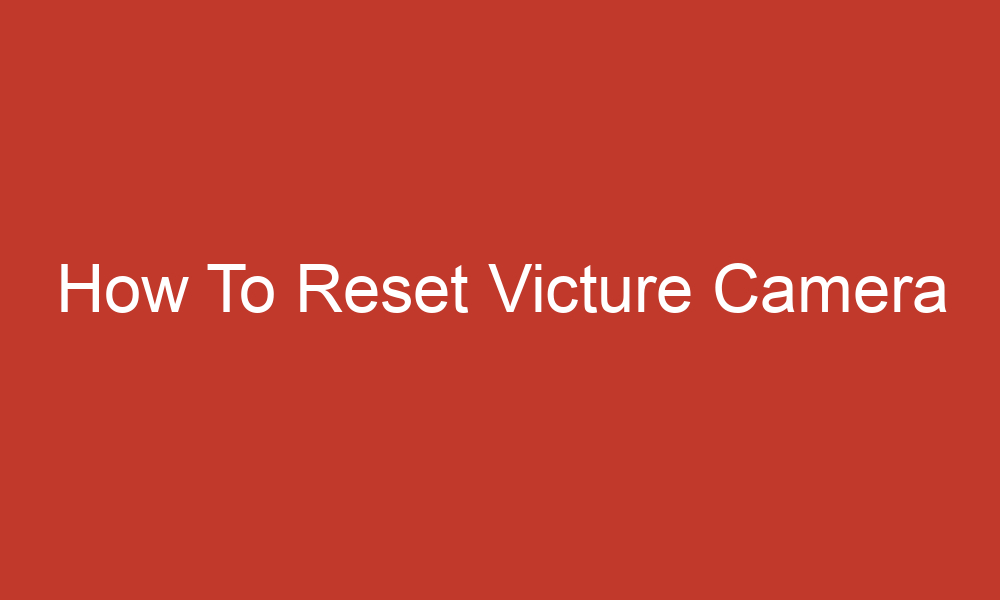When it comes to photography, understanding the concept of shutter speed is crucial. Shutter speed refers to the length of time that the camera’s shutter remains open, allowing light to enter and expose the camera’s image sensor. It plays a vital role in capturing the perfect shot, freezing motion, and controlling the amount of light in an image.
In this comprehensive guide, we will explore the ins and outs of shutter speed, its effects on exposure and motion, different settings, creative applications, and common mistakes to avoid. So let’s dive in and unravel the mysteries of shutter speed!
Table of Contents
What is Shutter Speed?
Shutter speed refers to the length of time that the camera’s shutter remains open, allowing light to pass through the lens and reach the camera sensor or film. It is measured in seconds or fractions of a second. A faster shutter speed means the shutter is open for a shorter duration, while a slower shutter speed means the shutter remains open for a longer period.
Understanding Shutter Speed
Shutter speed, measured in seconds or fractions of a second, determines how long the camera’s shutter remains open. It is one of the three pillars of exposure in photography, alongside aperture and ISO.
Shutter speed directly affects the amount of light that reaches the camera’s image sensor. A fast shutter speed (e.g., 1/1000s) allows only a brief moment of light to enter, while a slow shutter speed (e.g., 1s) keeps the shutter open for a longer duration.
Shutter Speed and Exposure
Shutter speed plays a crucial role in determining the exposure of an image. Exposure refers to the amount of light that reaches the camera’s image sensor and affects the brightness of the final photograph.
To achieve a well-exposed image, you need to find the right balance between shutter speed, aperture, and ISO.
A fast shutter speed (e.g., 1/1000s) is ideal for capturing moving subjects or freezing action. It allows less light to enter the camera, resulting in a darker image.
On the other hand, a slow shutter speed (e.g., 1s) is suitable for low-light situations or when you want to capture motion blur. It allows more light to enter the camera, resulting in a brighter image.
Relationship Between Shutter Speed and Motion
Shutter speed has a direct relationship with motion in photography. A fast shutter speed freezes the action and captures sharp images of moving subjects. It is perfect for sports, wildlife, or any situation where you want to capture a fleeting moment without any blur.
On the contrary, a slow shutter speed introduces motion blur, creating a sense of movement in the image. It can be used creatively to capture light trails, flowing water, or any subject that involves motion.
The Effect of Shutter Speed on Images
Shutter speed not only affects exposure and motion but also has a significant impact on the overall look and feel of an image. The choice of shutter speed can create different effects and evoke different emotions. Let’s explore some common effects produced by various shutter speed settings:
- Fast Shutter Speed (1/1000s and above): This setting freezes action, resulting in sharp and crisp images. It is ideal for capturing sports, fast-moving objects, or any situation where you want to capture a moment with minimal blur.
- Moderate Shutter Speed (1/100s to 1/500s): This setting balances freezing action and introducing motion blur. It can be used to capture subjects with moderate movement, such as people walking or cars driving by.
- Slow Shutter Speed (1s and above): This setting introduces motion blur, creating a sense of movement in the image. It is perfect for capturing long exposure shots of flowing water, light trails, or any subject that involves intentional blurring.
Different Shutter Speed Settings
Now that we understand the effects of shutter speed on images, let’s explore the different settings available on most cameras:
- Automatic Mode: In this mode, the camera determines the optimal shutter speed based on the scene and lighting conditions. It is suitable for beginners or situations where you want to let the camera make the decisions.
- Shutter Priority Mode: This mode allows you to manually set the desired shutter speed while the camera adjusts the aperture accordingly. It gives you control over the shutter speed and is perfect for situations where motion is a critical factor.
- Manual Mode: In this mode, you have complete control over both shutter speed and aperture settings. It offers maximum creative control but requires a good understanding of exposure and how different settings affect the image.
Choosing the Right Shutter Speed
Choosing the right shutter speed depends on the specific situation and the effect you want to achieve. Here are some guidelines to help you make the right choice:
- Determine the Subject: Consider the subject you are photographing and the type of motion involved. If you want to freeze action, a fast shutter speed is essential. If you want to capture motion blur, a slow shutter speed is the way to go.
- Lighting Conditions: Take into account the available light. In bright conditions, you may need a faster shutter speed to avoid overexposure. In low-light situations, a slower shutter speed may be necessary to allow enough light into the camera.
- Lens Stabilization: If your camera or lens has image stabilization features, it can help compensate for camera shake and allow you to use slower shutter speeds without introducing blur.
- Tripod Use: When using slow shutter speeds, it is essential to stabilize the camera to avoid blur caused by the camera shake. A tripod or other stable support can be used to keep the camera steady during long exposures.
Using Shutter Speed for Creative Effects
Shutter speed is a powerful tool that can be used creatively to achieve unique effects in your photographs. Here are some creative applications of shutter speed:
- Light Trails: By using a slow shutter speed and capturing moving lights, such as cars at night, you can create beautiful light trails that add a sense of dynamism and movement to your images.
- Long Exposure: Slow shutter speeds can be used to capture long exposure shots of flowing water, creating a silky and smooth effect. This technique is often used in landscape photography to create dreamy and ethereal images.
- Motion Blur: Intentional use of slow shutter speeds can introduce motion blur to convey a sense of movement or create abstract and artistic images. This technique is commonly used in dance or sports photography to capture the energy and fluidity of the subject.
Tips for Using Shutter Speed in Photography
Here are some handy tips to help you make the most out of your shutter speed settings:
- Experiment: Don’t be afraid to experiment with different shutter speeds to see the effects they produce. Try capturing the same scene with varying shutter speeds and compare the results.
- Use Burst Mode: When shooting fast-moving subjects, such as sports or wildlife, use the camera’s burst mode to capture a series of images in rapid succession. This increases the chances of capturing the perfect moment without any motion blur.
- Use a Remote Shutter Release: To avoid camera shake when using slow shutter speeds, use a remote shutter release or the camera’s self-timer function. This way, you can trigger the shutter without touching the camera, minimizing the risk of introducing blur.
- Combine Shutter Speed with Other Techniques: Shutter speed is just one aspect of photography. Combine it with other techniques like composition, lighting, and focal length to create compelling and impactful images.
Common Mistakes to Avoid
While using shutter speed, it’s essential to be aware of some common mistakes that photographers often make:
- Using the Wrong Shutter Speed: Choosing the wrong shutter speed can result in blurry or overexposed images. Be mindful of the specific requirements of the scene and subject and choose the appropriate shutter speed accordingly.
- Ignoring the Impact of Shutter Speed: Shutter speed is a powerful tool that can significantly affect the outcome of your photographs. Ignoring its impact can limit your creative potential and result in less impactful images.
- Forgetting to Check the Camera Settings: Before capturing an image, double-check the camera settings, including the shutter speed, to ensure they are suitable for the desired effect. Mistakenly using the wrong settings can lead to disappointing results.
- Not Using a Tripod When Needed: When using slow shutter speeds, it’s crucial to stabilize the camera to avoid camera shake. Neglecting to use a tripod or other stable support can result in blurry images.
Shutter Speed and Video Recording
Shutter speed is not only important in photography but also in videography. In video recording, the shutter speed determines how motion is captured. Here are a few points to keep in mind:
- Frame Rate and Shutter Speed: When shooting video, it is recommended to set the shutter speed to double the frame rate. For example, if you are shooting at 24 frames per second, set the shutter speed to 1/48th of a second. This helps to create natural-looking motion blur and cinematic footage.
- High-Speed Video: When shooting high-speed video, such as slow-motion footage, a faster shutter speed is required to capture the fast-moving action without motion blur. Experiment with different shutter speeds to find the right balance between capturing detail and maintaining a smooth appearance.
- Video Stabilization: Just like in photography, using a stable support, such as a tripod or a gimbal, can significantly improve the quality of your video footage. It helps to minimize camera shake and ensures smoother, more professional-looking videos.
Conclusion
Shutter speed is a fundamental aspect of photography that plays a crucial role in determining the exposure and capturing motion in your images. By understanding how shutter speed works and how it affects your photographs, you can take full control of your camera and create stunning and impactful images.
Remember to experiment, be mindful of the specific requirements of each situation, and consider the creative possibilities that different shutter speed settings offer.
Now that you have a better understanding of shutter speed, grab your camera, and start exploring the world of photography with confidence!




